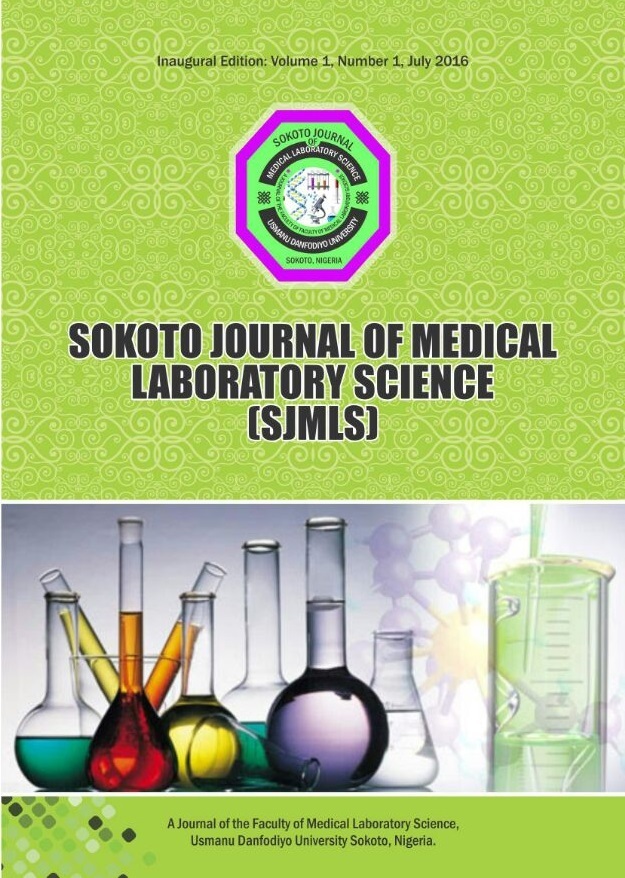Macrolide, Lincosamides and Streptogramin-B (MLS B ) Resistance Phenotypes in Community and Hospital-Associated Staphylococcus Aureus in Sokoto, Nigeria.
Keywords:
Macrolides, Lincosamides, MRSA, MLS B , Staphylococcus aureusAbstract
The Macrolide, Lincosamides and Streptogramin-B (MLS B ) is a group of chemically distinct agents with similar mode of action and target site. In the event of failure of β-lactam antibiotics, clindamycin become the drug of choice for treating Gram positive infections. The aim of the study is to determine the patterns of MLS B resistance in community and hospital associated Staphylococcus aureus in
Sokoto. During the study, 272 non-repetitive specimens from hospitals (Specialist hospital Sokoto and Maryam Abacha) and apparently healthy community volunteers (Almajiri Integrated School in Denge-Shuni) were collected and analysed. Out of the 272 samples analysed 81(29.8%) Staphylococcus aureus isolates were recovered and identified using standard microbiological methods. Twenty-nine (35.8%) of the Staphylococcus aureus isolates were community-associated while 52(64.2%) were from the hospital (hospital -associated). Of the 81 isolates studied 51(63.0%) were sensitive to both erythromycin and clindamycin, 10(12.3%) exhibited constitutive resistance to both drugs while the remaining 20(24.7) exhibited erythromycin-clindamycin discordance. Out of the 20 discordant isolates 2(10.0%) tested positive for the iMLS B phenotype, both isolates were from hospital specimens (p=0.260). All the iMLS B positive S. aureus were isolated from the age group 0-10 years, none was isolated from the other age groups (p=0.060). The antibiotic susceptibility profile of the isolates showed that the most potent antibiotics were quinupristin-dalfopristin, clindamycin and gentamycin with resistance seen only in 9.9%, 14.8% and 25.9% of all isolates tested respectively. The highest resistance of 53.1% was observed in trimethoprim-sulphamethoxazole. Although the prevalence of iMLS B observed in this study is relatively low it still calls for vigilance on the part of both laboratory scientist and clinicians.




